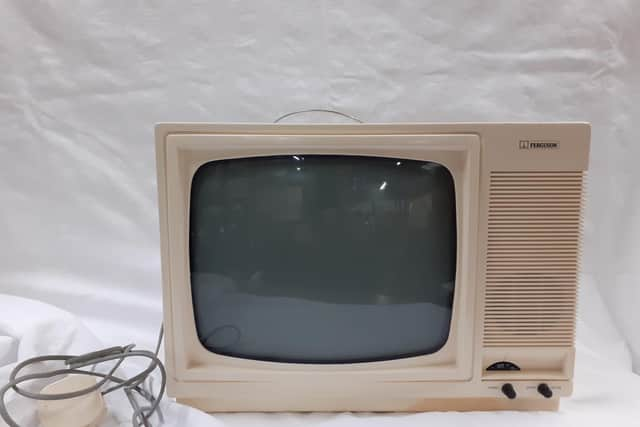Fancy a retro TV to watch your classic TV comedy boxsets?
and live on Freeview channel 276
It’s worrying when things you think of as ‘modern’ are revealed as, well, not so much. Take the classic TV series ‘Only Fools and Horses’: 40 years old this week! Now we can watch any programme anywhere, anytime, it’s a lovely reminder of family evenings gathered together around the TV.
The invention of television is complicated, with multiple competing inventors worldwide. Spurred on by telephone and wireless radio technology, very rudimentary, mechanical televisions started to emerge at the end of the nineteenth century.
Advertisement
Hide AdAdvertisement
Hide AdThis is where my very personal connection comes in: my great uncle was Scottish inventor John Logie Baird, famous for demonstrating the world’s very first working television system in January 1926. Unfortunately, John’s mechanical TV eventually lost out to an electronic system pioneered by Marconi, backed with money from EMI.


John couldn’t compete, but remained inventing and working for the BBC until his death. My middle name is Baird, and I am so proud of my pioneering great uncle.
The first electronic sets became commercially available in the late 30s. Collectors draw a sharp distinction between pre-war and post-war television sets, as so few of the former were manufactured, hardly any survive. In fact, there are more 18th century Stradivarius violins still in circulation than pre-war TVs!
All-electronic colour sets were first introduced in 1954, with the BBC broadcasting in full colour from 1960. People were so keen to watch the 1966 world cup final in colour, that the amount of TVs sold, doubled in this period with the demand for colour sets. Starting a boom in manufacturing over these two decades, collectable UK vintage television brands include Murphy, Bush, Thorn, Pye, HMV and Phillips.
Advertisement
Hide AdAdvertisement
Hide AdMost enthusiasts collect black and white sets from 1939 to 1949, and colour TVs through to 1960. From the mid-50s, TVs became more common, and less visually interesting. Many get a great deal of pleasure from renovating and repairing old sets.
And surely there’s nothing better to watch on a chunky vintage British television than retro British sitcoms. This 1980s Ferguson set is in the centre priced just £10, and we always have a large selection of DVDs and even videos to rummage in, with prices starting at £1 (or should that be twenty shillings?)
When my great uncle demonstrated his television system nearly a century ago, no one could have known how influential the ‘telly’ would become. The early device which used a biscuit tin and a knitting needle has evolved into a fixture in virtually every home in the developed world.